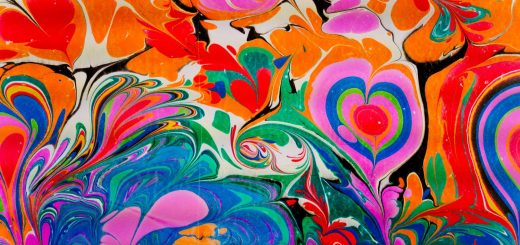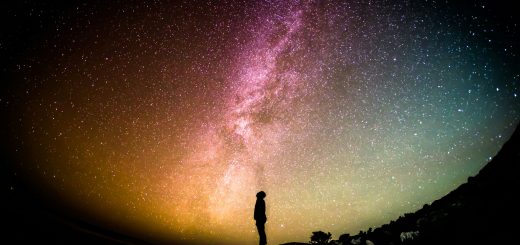Brahman and Samsara: Cycle of Birth and Rebirth

Hey there, amazing readers! 🖐️ Just a quick note: yes, we know there are a lot of ads here. Trust us, we get it—it’s not the prettiest look, but they help us keep this blog alive and kicking. Those pesky little ads cover the costs of all the behind-the-scenes magic, from hosting and tech stuff to creating content we hope you’ll love.
We’re committed to delivering quality posts, and your support (even just sticking around despite the ads) means everything to us. So, bear with us, and thanks for helping us keep the good vibes rolling. Now, on to the fun stuff! 😉
TRANSLATE BUTTON AT THE END OF THE ARTICLE
A Quick Overview
Hinduism, one of the oldest religions in the world, is rich in philosophical ideas and spiritual concepts.
Central to Hindu beliefs are the concepts of Brahman and Samsara, which shape the understanding of the universe, life, and existence.
Brahman represents the ultimate reality, the supreme being that encompasses all of existence.
Samsara, on the other hand, is the cycle of birth and rebirth that all living beings go through, driven by the law of karma.
In this article, we will delve deeper into these fundamental aspects of Hindu philosophy, exploring their significance and implications for spiritual seekers.
Understanding Brahman: The Ultimate Reality
Brahman Defined: In Hindu philosophy, Brahman is the supreme, unchanging reality that underlies all existence.
It is described as the eternal, infinite, and absolute reality from which everything arises and to which everything returns.
Beyond Form and Attributes: Brahman is beyond human comprehension, beyond any form or attributes.
It transcends individual identities, concepts, and limitations, existing as the all-encompassing essence of the universe.
Unity in Diversity: Despite the diversity of the world, Brahman is seen as the unity that connects all beings and phenomena.
It is the source of creation, preservation, and destruction, manifesting in various forms and expressions.
Realizing Brahman: Through spiritual practices such as meditation, self-inquiry, and devotion, individuals seek to realize their true nature as Brahman.
This realization leads to the experience of oneness with the ultimate reality, transcending the limitations of the individual self.
Implications for Life: Understanding Brahman as the ultimate reality can transform one’s perspective on life, fostering a sense of interconnectedness, compassion, and spiritual growth.
It serves as a guiding principle in Hindu ethics and moral values.
Exploring Samsara: The Cycle of Birth and Rebirth
Samsara Defined: Samsara refers to the continuous cycle of birth, life, death, and rebirth that all living beings undergo.
It is the journey of the soul through different life forms, driven by the law of karma.
Endless Cycle: According to Hindu beliefs, Samsara is an endless cycle of existence, where individuals experience the consequences of their actions in past lives and create new karma for future lives.
Purpose of Samsara: Samsara is seen as a process of spiritual evolution, where individuals learn and grow through multiple lifetimes, seeking to overcome ignorance and attain liberation.
Wheel of Life: The imagery of the wheel of Samsara symbolizes the repetitive nature of existence, with beings moving through different realms based on their actions and desires.
Breaking the Cycle: The ultimate goal in Hinduism is to break free from the cycle of Samsara and attain liberation, known as Moksha.
This liberation is achieved through self-realization and spiritual enlightenment.
Key Concepts in Hindu Philosophy
Atman: Atman refers to the individual soul or self, which is believed to be eternal and unchanging.
It is the essence of one’s being, distinct from the physical body and mind.
Karma: Karma is the law of cause and effect, determining the consequences of one’s actions based on their intentions and deeds.
Good karma leads to positive outcomes, while bad karma results in suffering.
Dharma: Dharma is the righteous duty and moral responsibility that individuals are expected to fulfill in their lives.
It encompasses ethical conduct, social obligations, and spiritual practices.
Moksha: Moksha is the ultimate goal of human life, liberation from the cycle of Samsara and union with Brahman.
It represents the highest state of spiritual realization and freedom from suffering.
Yoga: Yoga is a spiritual practice that aims to unite the individual soul with the universal consciousness.
It includes various paths such as Karma Yoga, Bhakti Yoga, Jnana Yoga, and Raja Yoga.
Brahman: The Supreme Being in Hinduism
Source of Creation: Brahman is considered the source of creation, the ultimate reality from which the universe emerges.
It is the cosmic principle that sustains and governs all existence.
Impersonal and Personal Aspects: Brahman is described as having both impersonal and personal aspects.
As the impersonal absolute, it is formless and beyond attributes.
As the personal deity, it manifests in various forms and avatars.
Deities and Manifestations: Hinduism recognizes a pantheon of deities and manifestations of Brahman, including Vishnu, Shiva, Devi, and others.
These deities represent different aspects of the supreme reality and serve as objects of worship.
Unity in Diversity: Despite the worship of multiple deities, Hindus believe in the underlying unity of all manifestations of Brahman.
All deities are seen as different expressions of the same ultimate reality.
Devotion and Worship: Devotional practices such as prayer, rituals, and ceremonies are central to Hindu worship of Brahman.
By cultivating love and devotion towards the divine, individuals seek to establish a personal connection with the supreme being.
The Nature of Samsara in Hindu Beliefs
Cycles of Birth and Death: Samsara is characterized by the continuous cycles of birth, death, and rebirth, known as reincarnation.
Individuals move through different life forms based on their karma and desires.
Illusion of Separateness: The experience of Samsara is rooted in the illusion of separateness, where individuals identify with their physical bodies and ego, leading to suffering and attachment.
Transcendence of Ego: Overcoming the ego is essential for transcending the cycle of Samsara and realizing one’s true nature as the eternal soul.
By recognizing the impermanence of the self, individuals can attain liberation.
Purpose of Suffering: Suffering in Samsara is seen as a catalyst for spiritual growth and self-realization.
It prompts individuals to seek higher truths, practice virtues, and cultivate wisdom.
Karma and Rebirth: The law of karma governs the process of rebirth in Samsara, determining the circumstances and experiences of individuals in each life.
Positive karma leads to favorable conditions, while negative karma results in adversity.
How Karma Drives the Cycle of Samsara
Law of Cause and Effect: Karma is the law of cause and effect that governs the consequences of one’s actions.
Every thought, word, and deed generates karma, which influences the future experiences of individuals.
Three Types of Karma: In Hindu philosophy, karma is classified into three types: Sanchita karma (accumulated karma from past lives), Prarabdha karma (karma that is currently being experienced), and Agami karma (karma that is yet to be created).
Purification of Karma: Through selfless actions, devotion, and spiritual practices, individuals can purify their karma and mitigate the negative effects of past actions.
By cultivating virtuous qualities, one can create positive karma for future lives.
Karma and Free Will: While karma shapes the circumstances of individuals’ lives, it is believed that humans have free will to choose their actions and influence their karma.
By making conscious choices and acting with awareness, individuals can create positive outcomes.
Karma and Rebirth: The interplay of karma and rebirth is central to the cycle of Samsara.
Individuals are born into specific circumstances and experiences based on their past actions, which provide opportunities for spiritual growth and self-realization.
Liberation from Samsara: Moksha
Definition of Moksha: Moksha is the ultimate goal of human life in Hinduism, representing liberation from the cycle of Samsara and union with the divine.
It is the state of spiritual enlightenment, freedom from suffering, and realization of one’s true nature.
Paths to Moksha: Hinduism offers various paths to attain Moksha, known as the four yogas: Karma Yoga (the path of selfless action), Bhakti Yoga (the path of devotion), Jnana Yoga (the path of knowledge), and Raja Yoga (the path of meditation).
Self-Realization: Moksha involves self-realization, the direct experience of one’s true nature as the eternal soul or Atman.
By transcending the limitations of the ego and identifying with the higher self, individuals can attain liberation from the cycle of birth and rebirth.
Signs of Liberation: A liberated soul is characterized by qualities such as wisdom, compassion, detachment, and inner peace.
It is free from desires, ego, and the illusion of separateness, existing in a state of union with Brahman.
Importance of Moksha: Moksha is considered the highest purpose of human existence, offering freedom from the cycle of suffering and the realization of eternal bliss.
It represents the culmination of spiritual evolution and the fulfillment of the soul’s journey towards ultimate truth.
Reincarnation in Hinduism: The Role of Atman
Concept of Reincarnation: Reincarnation, or the cycle of birth and rebirth, is a central tenet of Hinduism.
It is based on the belief that the soul (Atman) is eternal and transmigrates from one body to another after death.
Atman and Brahman: The individual soul, Atman, is believed to be a fragment of the ultimate reality, Brahman.
While Atman is distinct from the physical body and mind, it is interconnected with the universal consciousness.
Purpose of Reincarnation: Reincarnation serves as a mechanism for the soul to evolve, learn, and grow through different life experiences.
Each birth presents opportunities for spiritual progress and the resolution of karmic debts.
Karma and Rebirth: The law of karma determines the circumstances and experiences of individuals in each life, shaping the process of rebirth.
Positive actions lead to favorable rebirths, while negative actions result in challenging circumstances.
Cycle of Samsara: Reincarnation is part of the larger cycle of Samsara, where beings move through various life forms based on their karma and desires.
The ultimate goal is to break free from this cycle and attain liberation from Samsara.
Dharma and Samsara: Living a Righteous Life
Definition of Dharma: Dharma refers to the righteous duty, moral responsibility, and ethical principles that individuals are expected to uphold in their lives.
It encompasses personal conduct, social obligations, and spiritual practices.
Role of Dharma: Dharma guides individuals in living a virtuous and meaningful life, aligning their actions with universal principles of truth, righteousness, and duty.
It serves as a moral compass for navigating the complexities of existence.
Dharma and Karma: Upholding Dharma is essential for creating positive karma and meritorious actions that lead to favorable outcomes in this life and future rebirths.
By following one’s Dharma, individuals contribute to the harmony and order of the universe.
Types of Dharma: Hinduism recognizes different types of Dharma, including Svadharma (one’s own duty based on caste and station in life), Samanya Dharma (universal duties applicable to all), and Yuga Dharma (duties based on the age or era).
Dharma and Spiritual Progress: By fulfilling one’s Dharma with sincerity, dedication, and integrity, individuals make progress on the spiritual path towards self-realization and liberation from Samsara.
Dharma serves as a stepping stone to higher states of consciousness and divine union.
The Importance of Self-Realization in Hinduism
Self-Realization Defined: Self-realization is the process of recognizing and experiencing one’s true nature as the eternal soul (Atman) beyond the limitations of the ego and mind.
It involves transcending the illusion of separateness and identifying with the higher self.
Purpose of Self-Realization: Self-realization is the key to liberation from the cycle of Samsara and union with Brahman.
By realizing the eternal nature of the soul and its connection to the supreme reality, individuals attain spiritual enlightenment and freedom from suffering.
Methods of Self-Realization: Hinduism offers various methods for self-realization, including meditation, self-inquiry, contemplation, and spiritual practices.
By turning inward, seeking the truth within, and connecting with the divine essence, individuals can awaken to their true nature.
Path of Knowledge: Jnana Yoga is the path of knowledge in Hindu philosophy, emphasizing the importance of self-inquiry, discrimination, and understanding the nature of reality.
By discerning between the eternal and the transient, individuals gain insight into their true self.
Benefits of Self-Realization: Self-realization brings profound benefits such as inner peace, clarity of mind, freedom from suffering, and unity with the divine.
It leads to a state of transcendence beyond the limitations of the ego, attachment, and ignorance.
Breaking the Cycle of Birth and Rebirth
Desire and Attachment: The cycle of Samsara is perpetuated by desires, attachments, and karma that bind individuals to the wheel of birth and death.
Overcoming desires and attachments is essential for breaking free from the cycle of rebirth.
Renunciation and Detachment: By cultivating detachment, renouncing worldly desires, and transcending the ego, individuals can diminish the influence of karma and liberate themselves from the cycle of Samsara.
Renunciation does not mean avoiding responsibilities but letting go of attachments to outcomes.
Purification of Karma: Purifying karma through selfless actions, virtuous deeds, and spiritual practices is crucial for breaking the cycle of birth and rebirth.
By resolving past karmic debts and creating positive karma, individuals pave the way for spiritual liberation.
Self-Realization and Moksha: Self-realization is the key to breaking the cycle of Samsara and attaining Moksha.
By recognizing one’s true nature as the eternal soul, transcending the ego, and realizing union with Brahman, individuals can liberate themselves from the cycle of birth and rebirth.
Liberation from Samsara: The ultimate goal in Hinduism is to attain liberation from Samsara, breaking free from the endless cycles of birth and death.
Through spiritual practices, self-realization, and the pursuit of Moksha, individuals can achieve freedom from suffering and realize their ultimate purpose.
Achieving Spiritual Enlightenment: Paths to Moksha
Karma Yoga: Karma Yoga is the path of selfless action and service, where individuals dedicate their actions to the divine without attachment to outcomes.
By performing duties with a sense of detachment and surrender, one can purify karma and progress towards Moksha.
Bhakti Yoga: Bhakti Yoga is the path of devotion and love towards the divine, cultivating a deep emotional connection with the supreme being.
Through prayers, rituals, and surrender to the divine, individuals can experience divine grace and attain spiritual enlightenment.
Jnana Yoga: Jnana Yoga is the path of knowledge and wisdom, emphasizing self-inquiry, discrimination, and understanding the nature of reality.
By discerning between the eternal and the transient, individuals can realize their true nature as the eternal soul and attain liberation.
Raja Yoga: Raja Yoga is the path of meditation and self-discipline, focusing on controlling the mind, purifying consciousness, and attaining inner peace.
By practicing meditation, breath control, and mental concentration, individuals can achieve spiritual enlightenment and union with the divine.
Integration of Paths: While Hinduism offers different paths to Moksha, individuals may integrate elements of Karma Yoga, Bhakti Yoga, Jnana Yoga, and Raja Yoga according to their temperament and spiritual needs.
By following a balanced approach, individuals can progress towards spiritual enlightenment and liberation from the cycle of Samsara.
Conclusion
In Hindu philosophy, the concepts of Brahman and Samsara play a central role in shaping the understanding of existence, consciousness, and ultimate reality.
Brahman represents the supreme being, the source of creation and universal consciousness, while Samsara symbolizes the cycle of birth and rebirth driven by the law of karma.
Through self-realization, spiritual practices, and the pursuit of Moksha, individuals seek to break free from the cycle of Samsara and attain liberation from suffering.
By cultivating virtues, practicing righteousness, and realizing the eternal nature of the soul, individuals can achieve spiritual enlightenment and union with the divine.
Hinduism offers a comprehensive

The Enlightenment Journey is a remarkable collection of writings authored by a distinguished group of experts in the fields of spirituality, new age, and esoteric knowledge.
This anthology features a diverse assembly of well-experienced authors who bring their profound insights and credible perspectives to the forefront.
Each contributor possesses a wealth of knowledge and wisdom, making them authorities in their respective domains.
Together, they offer readers a transformative journey into the realms of spiritual growth, self-discovery, and esoteric enlightenment.
The Enlightenment Journey is a testament to the collective expertise of these luminaries, providing readers with a rich tapestry of ideas and information to illuminate their spiritual path.
Our Diverse Expertise 🌟
While our primary focus is on spirituality and esotericism, we are equally passionate about exploring a wide range of other topics and niches 🌍📚. Our experienced team is dedicated to delivering high-quality, informative content across various subjects ✨.
To ensure we provide the most accurate and valuable insights, we collaborate with trusted experts in their respective domains 🧑🏫👩🏫. This allows us to offer well-rounded perspectives and knowledge to our readers.
Our blog originally focused on spirituality and metaphysics, but we’ve since expanded to cover a wide range of niches. Don’t worry—we continue to publish a lot of articles on spirituality! Frequently visit our blog to explore our diverse content and stay tuned for more insightful reads.





